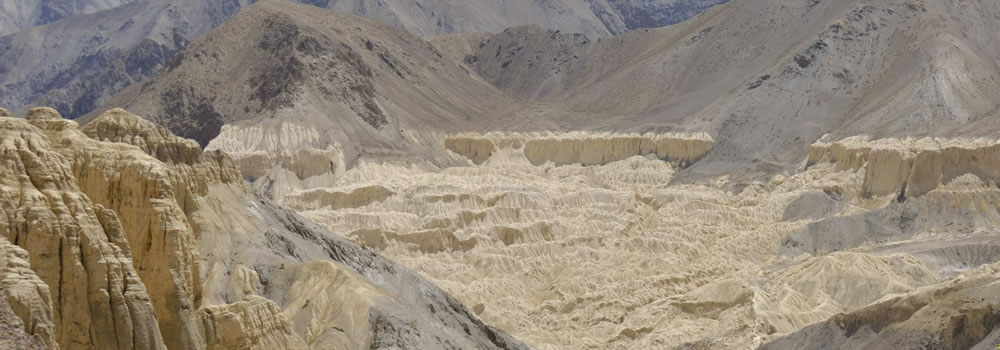Agriculture tour
 Ladakh, or "Little Tibet", is a wildly beautiful desert region high in the Western Himalayas, at altitudes ranging from 10,000 to 14,000 feet (from 3,000 to 4,300 m). Ladakh is a place of few resources and has an extreme climate, yet it was home to a thriving culture for more than a thousand years. Traditions of frugality and co-operation, coupled with an intimate knowledge of the local environment, enabled the Ladakhis not only to survive, but also to prosper. The local economy and culture served people so well, in fact, that hunger, crime, pollution and ethnic conflict were traditionally all but unknown.
Ladakh, or "Little Tibet", is a wildly beautiful desert region high in the Western Himalayas, at altitudes ranging from 10,000 to 14,000 feet (from 3,000 to 4,300 m). Ladakh is a place of few resources and has an extreme climate, yet it was home to a thriving culture for more than a thousand years. Traditions of frugality and co-operation, coupled with an intimate knowledge of the local environment, enabled the Ladakhis not only to survive, but also to prosper. The local economy and culture served people so well, in fact, that hunger, crime, pollution and ethnic conflict were traditionally all but unknown.
Agriculture in Ladakh is based on human labour, animal power and hand-made tools. Terraced fields on slopes of high mountains or in small rugged valleys are irrigated with glacial meltwater and fertilised with human "night soil". Families also have small vegetable gardens and sometimes apple or apricot orchards, and keep a few animals, such as, goats, sheep, mules and dzo (a cross between a yak and a local breed of cow). The technologies are simple, yet in the four months between the spring and autumn frosts, the Ladakhis produce more than enough food for the entire year. In most years, there was even a sizeable surplus of grain that could be traded for salt, tea or jewelry, and made into gallons of chang, the local beer.
Even with such harsh climatic ad geographical conditions, agriculture in Ladakh, by almost any measure, is extremely successful. It represents a unique way of human survival and progress. Although simple, it is ecologically sustainable, and just as important, people are supported by strong family and community bonds that provide a deep sense of psychological security. Due to its simplicity and closeness to nature, people are psychologically happy and physically fit.
But with modernity setting in, the traditional structures and processes are giving way to modern styles and problems. Most people now use chemical fertilizers and some kinds of technology to grow food.
Tour Itinernery request only.
Best to Visit May to August





